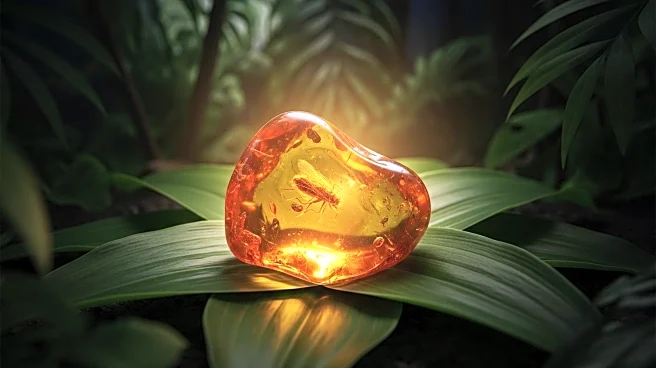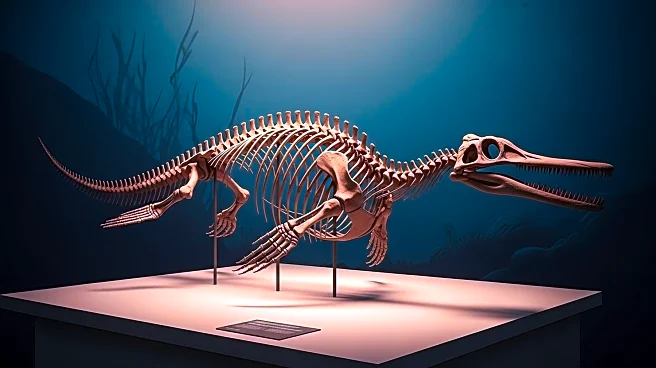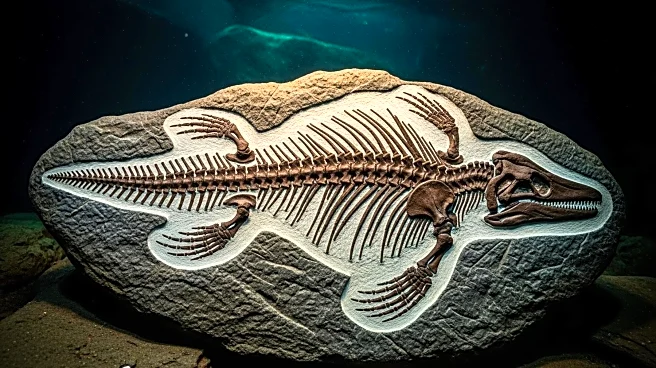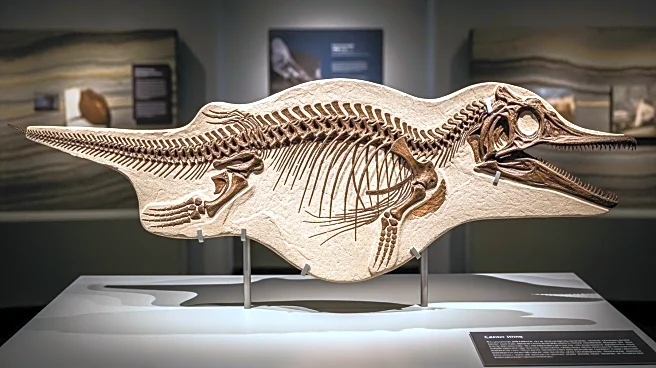What's Happening?
Scientists have discovered the first South American amber deposits containing preserved insects in a quarry in Ecuador. This significant find, detailed in a study published in Communications Earth & Environment, offers a glimpse into a 112-million-year-old forest that once existed on the ancient supercontinent Gondwana. Amber, which is fossilized tree resin, has been found in samples dating back as far as 320 million years, but became more common during the Cretaceous era, between 120 million and 70 million years ago. These resins sometimes contain 'bio-inclusions'—trapped remains of plants or animals—that provide rare insights into life forms such as insects and flowers. The research team, led by Xavier Delclòs, examined amber and rock samples from the Genoveva quarry in Ecuador, identifying two types of amber and finding 21 bio-inclusions representing five insect orders, including Diptera, Coleoptera, and Hymenoptera, as well as a fragment of spider web.
Why It's Important?
This discovery is crucial for understanding the biodiversity and ecosystem dynamics during the Cretaceous period, particularly in the Southern Hemisphere. Until now, most major amber deposits were found in the Northern Hemisphere, limiting scientific knowledge of Southern Hemisphere ecosystems during the time when continents were separating from Gondwana. The characteristics of the fossils suggest the amber originated in a warm, humid forest filled with dense vegetation and resin-producing trees. This find provides a new resource for studying life and biodiversity during a key period in Earth's history, potentially offering insights into evolutionary processes and environmental conditions of the time.
What's Next?
The discovery opens new avenues for research into prehistoric ecosystems and biodiversity. Scientists may continue to explore the Genoveva quarry and surrounding areas to uncover more amber deposits and bio-inclusions, which could further illuminate the ecological conditions of ancient Gondwana. This could lead to a deeper understanding of how ecosystems evolved and adapted over millions of years, influencing current biodiversity and conservation efforts.
Beyond the Headlines
The implications of this discovery extend beyond paleontology, offering potential insights into climate patterns and environmental changes during the Cretaceous period. Understanding the conditions that led to the preservation of these bio-inclusions could inform current studies on climate change and ecosystem resilience. Additionally, the find highlights the importance of South American regions in contributing to global scientific knowledge, potentially encouraging further exploration and investment in research in these areas.













